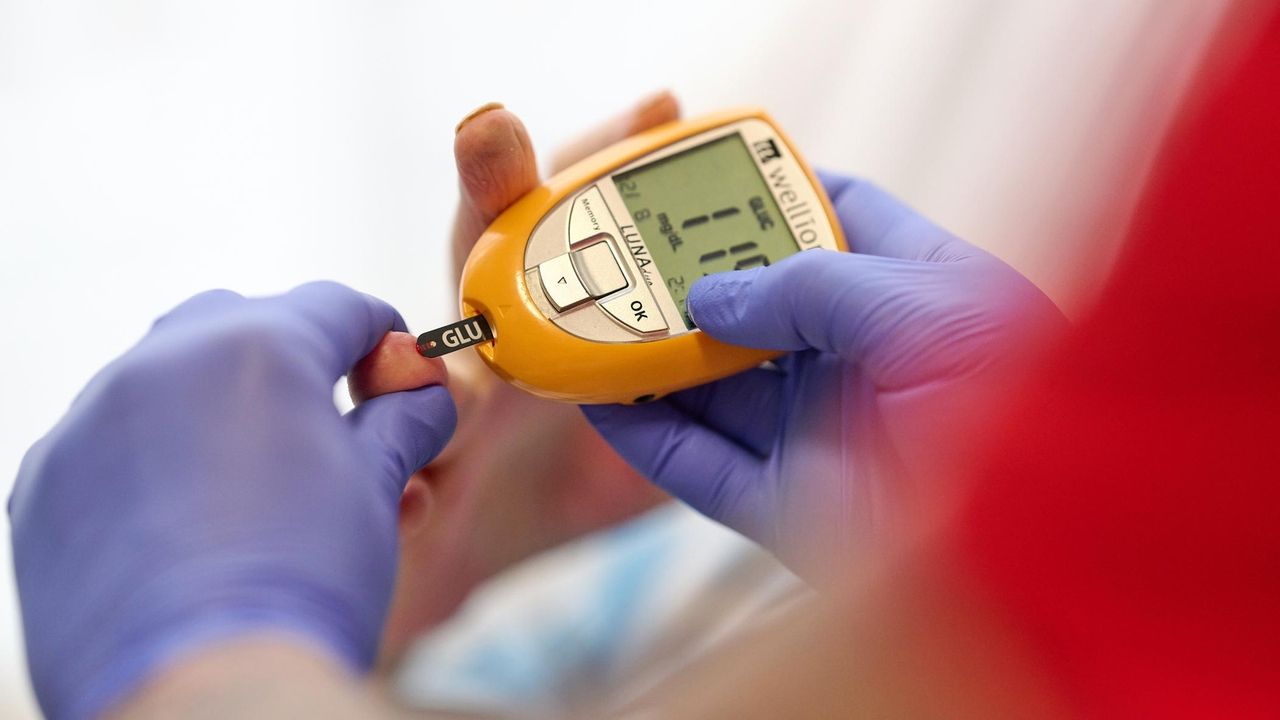The number of New Yorkers at risk of developing Type 2 diabetes more than doubled between 2011 and 2023, according to recent data released by the state Department of Health.
Doctors said the increase is linked to the growing population of people who are overweight or obese with underlying health conditions, as well as better screening efforts.
In 2011, 1 in 20 people had prediabetes. That jumped to 1 in 7 in 2023, a spike that state Health Commissioner Dr. James McDonald called an “alarming increase.”
“For many, prediabetes will develop into Type 2 diabetes within five years, increasing the risk of developing complications such as kidney disease, heart disease or even stroke,” McDonald said in a statement. “Most New Yorkers with prediabetes do not know they have it, so getting screened to understand your risk can save your life.”
State officials also said about 26% adults with hypertension or high cholesterol are more likely to have prediabetes. The highest number of New Yorkers diagnosed with prediabetes are between ages 55 and 64.
Experts on Long Island said more cases of prediabetes are being found as more doctors use the A1C blood test as a screening tool. That test measures a person’s blood sugar, or blood glucose, over the past three months.
For a person with prediabetes, the average blood glucose level measured by an A1C test is 5.7% and 6.4%. Diabetes is measured at 6.5% or above.
Regular glucose tests measure only the current blood sugar levels, which may be lower if a person fasted before testing.
The rising rate of prediabetes also is related to the rising rates of obesity, said Dr. Rifka C. Schulman-Rosenbaum, associate chief of the division of endocrinology, diabetes and metabolism at Long Island Jewish Medical Center and North Shore University Hospital.
“They’re kind of tied hand in hand,” she said.
Dr. Stanislaw Klek, chief of endocrinology, diabetes and metabolism at NYU Langone Hospital—Long Island, said the increasing sedentary lifestyle of many people has led to weight gain.
“We really are in the midst of the obesity epidemic, and one of the biggest risk factors for prediabetes and diabetes is excess body weight,” he said. “We see two graphs moving in conjunction as body weight has increased, the prediabetes and diabetes has followed that.”
But picking up the condition at the prediabetes level gives a person a better chance to avoid diabetes with a healthier diet, more exercise and sometimes medication, such as GLP-1 drugs. While they are not specifically targeted for prediabetes, some insurance plans will cover them for members who have a body mass index showing they are overweight or obese with other conditions.
“Diet and exercise are definitely the fundamentals,” Schulman-Rosenbaum said. “Less processed carbohydrates and less sweets and sodas.”
GLP-1 drugs allow people to lose weight and reverse their prediabetes or early-stage diabetes, she said.
“Patients who enroll in programs specifically focusing on healthy nutrition and exercising and those that are able to lose 5% to 7% of their body weight can reduce their risk of progressing to diabetes by about 50%,” Klek said.
More doctors are ordering up A1C tests for their patients, who may be at risk for diabetes, than previously. But both Klek and Schulman-Rosenbaum encouraged people to keep up with their annual checkups and speak with their doctors about having the test done.
“I do a lot of work in the hospital so I end up treating people who have uncontrolled diabetes,” Schulman-Rosenbaum said, “and they had no idea.”
Lisa joined Newsday as a staff writer in 2019. She previously worked at amNewYork, the New York Daily News and the Asbury Park Press covering politics, government and general assignment.

